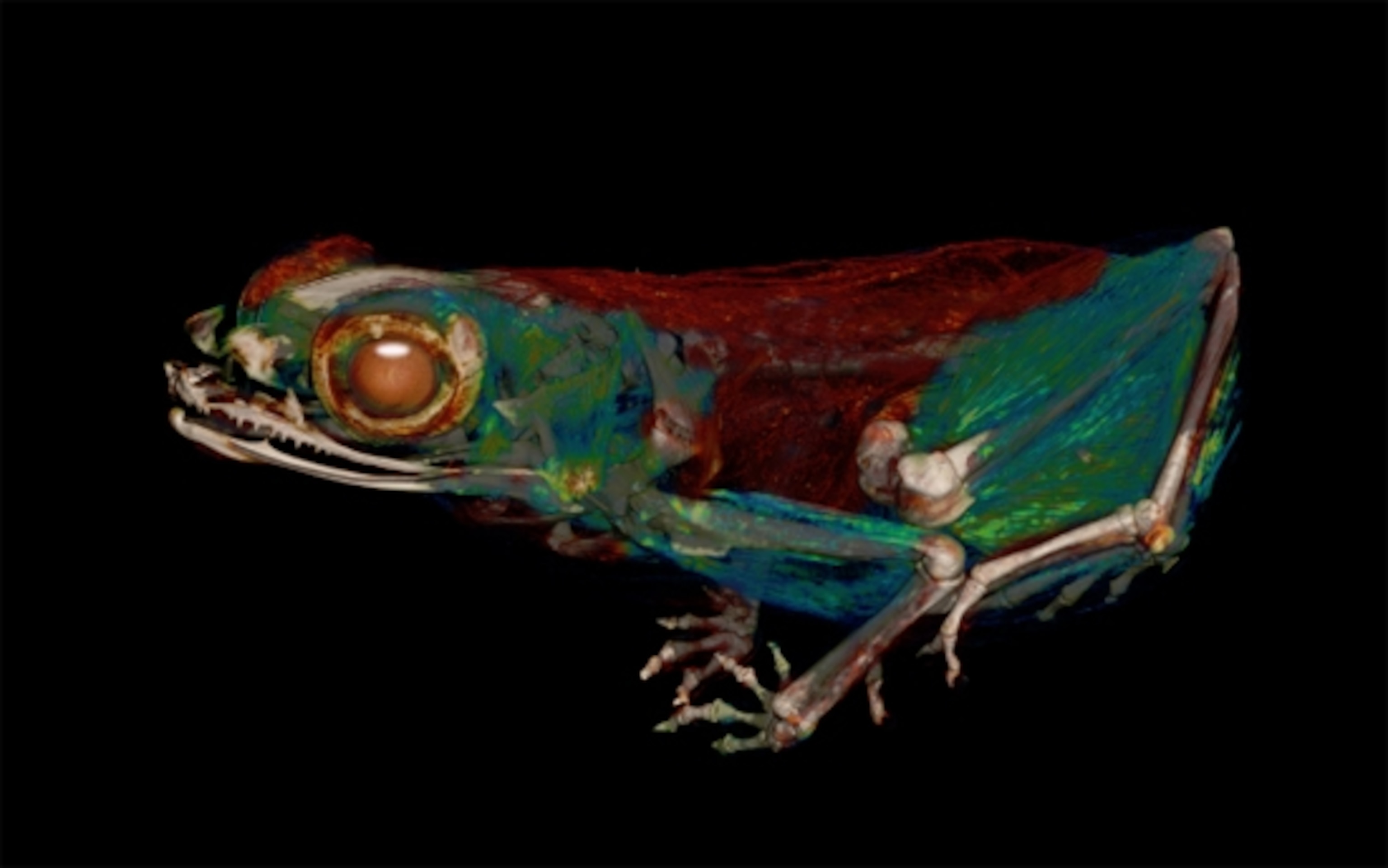
“Deaf” Frog Hears By Using Its Mouth As An Echo Chamber
Gardiner’s frog shouldn’t be able to hear. This dime-sized amphibian doesn’t have the right equipment for it.
In your head, sound waves pass through the flappy bits of your ear and vibrate a taut membrane—the eardrum. On the other side, three tiny bones transfer these faint air-borne vibrations into the fluid-filled inner ear, amplifying them along the way. In the inner ear, little hairs detect the vibrations and convert them into electrical signals that travel to your brain. This is how you hear, and it all depends upon the eardrum and the three bones within the so-called middle ear. Without these structures, 99.9 percent of the energy of incoming sound waves would be lost.
Gardiner’s frog doesn’t have a middle ear or an eardrum. It ought to be deaf.
And yet, it sings. When Renaud Boistel used loudspeakers to play recordings of the frog’s calls, other males would start calling in response. So, how does this “deaf” frog manage to hear? Boistel has a possible answer—they use their mouths.

Gardiner’s frog is one of the smallest amphibians in the world. At its maximum size of 11 millimetres, it’s barely bigger than a fingernail. It’s part of a whole family of tiny frogs called sooglossids, found in the Seychelles Islands off the east coast of Africa. All of them lack middle ears, but all of them can apparently hear their own calls.
To find out how, Boistel’s team at the University of Paris-Sud analysed the frog’s skull with a very high-resolution X-ray scanner. This showed that the inner ear is completely surrounded by a capsule of bone, which might help to conduct incoming sound. But when they ran simulations of sound waves travelling through the frog’s skull, they found that these were still severely weakened by the time they reached the inner ear, despite the adjacent bone.
The simulations also ruled out another possible idea—that earless frogs might use their lungs to carry vibrations into their inner ears. That might be true for some species, but Gardiner’s frog has small lungs that don’t make good contact with its sides. They’d be terrible sound transmitters.

But the team’s simulations also revealed something odd—a burst of pressure within the frog’s mouth. When the team added the animal’s mouth to their simulations, they found that it resonates at a frequency of 5,738 Hertz. Sounds of this frequency cause the mouth to reverberate strongly, turning it into an amplifier.
And guess what the average frequency of the frog’s call is? It’s 5,710 Hertz—roughly an F note, four octaves above middle C.
Gardiner’s frog seems to have a mouth that’s perfectly adapted for amplifying the calls of other Gardiner’s frogs, compensating for the lack of a middle ear. And it probably helps that the tissues between the mouth and inner ear are unusually thin.
This might explain why, in Boistel’s playback experiments, Gardiner’s frog reacts to the calls of its own kind, but not those of other frogs. Maybe its own calls are the only things it can hear.
“The idea is fascinating,” says Albert Feng from the University of Illinois. He proposed a similar idea back in 2011, to explain how another tiny frog, the Kihansi spray toad, could hear. However, Feng says the evidence that Boistel has provided is still tenuous and inconclusive, and he thinks they need to test their idea through experiments. For example, they might keep the frog’s mouth open, or briefly fill it with moistened cotton balls to see if they can still hear.
Reference: Boistel, Aubina, Cloeten, Peyrind, Scotti, Herzog, Gerlach, Pollet & Aubry. 2013. How minute sooglossid frogs hear without a middle ear. PNAS http://dx.doi.org/10.1073/pnas.1302218110
